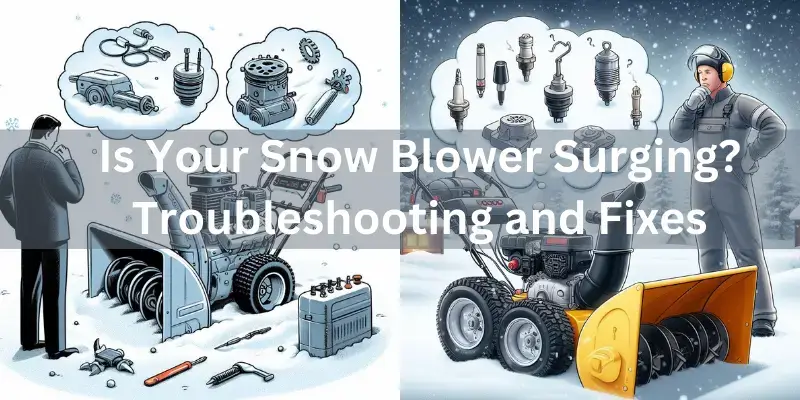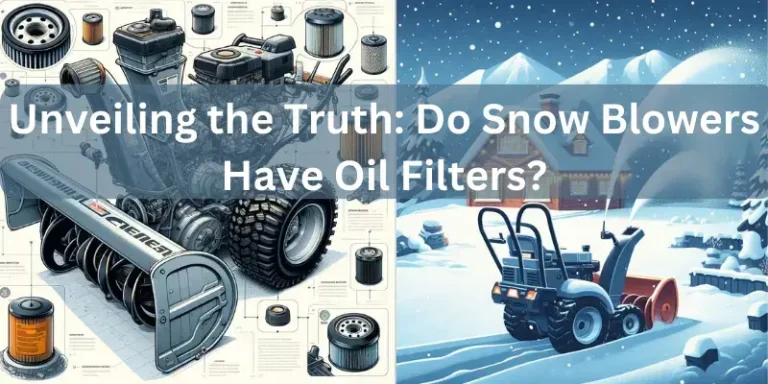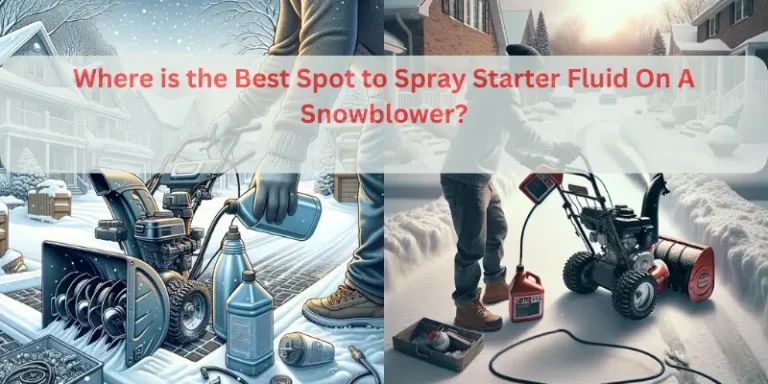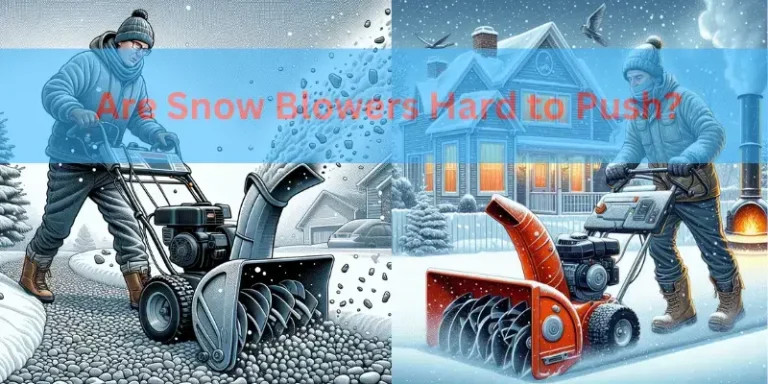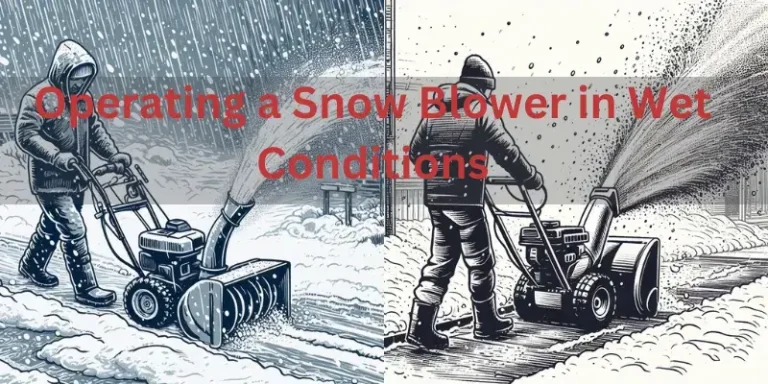Is Your Snow Blower Surging? Troubleshooting and Fixes
Picture this: It’s a cold winter morning, and my home entrance/ driveway is covered in snow. I am all set to start my snow blower and clear the way. But when I try to start it, I notice something’s off. The engine starts, but it’s not running right. It’s surging, and it’s not smooth. My snow blower, usually so reliable, is acting up. I’m left wondering, “Is your snow blower surging?“
In this blog, I am going to tell you the story of a snow blower surging. I’ll look into what’s causing this issue and share practical solutions to make my snow blower work well again. Whether I’m a seasoned snow-clearing pro or just starting, Everyone needs to understand and fix it for smooth snow clearing. So, let’s jump in and get my snow blower running smoothly once more!
How to Fix and Prevent a Surging SnowBlower Engine:
When you rely on your snow blower to clear your way through a snowy winter wonderland, the last thing you want is an engine. The good news is that many common causes of surging can be addressed with some straightforward solutions.
First, it’s essential to understand what’s causing your snow blower’s engine to surge. While there can be multiple factors, the key lies in maintaining your equipment well.
Quick Overview of Symptoms and their Solutions for Snowblower Surging
| Symptoms | Solutions |
| Engine starts but not running smoothly | Clean the carburetor jet, ensuring proper fuel-air mixture. |
| Surging, uneven or jerky engine rhythm | Replace worn gaskets that may disrupt the carburetor’s sealing function. |
| Air filter clogged with dust and debris | Replace the air filter to allow better airflow and combustion. |
| Broken carburetor spring affecting fuel flow | Install a new carburetor spring to ensure correct valve opening and closing. |
What Causes a Snow Blower Engine to Surge?
Clogged Carburetor Jet: When the carburetor jet gets clogged, it disrupts the air-fuel mixture, leading to engine surg. The clogged carburetor also a cause of Backfire in Snowblower.
Worn Gaskets: Gaskets play a vital role in sealing the carburetor and engine. When they wear out, it can result in surging.
Dirty Air Filter: An air filter clogged with dust and debris can disrupt the airflow, leading to an uneven mixture and surging.
Broken Carburetor Spring: The carburetor spring controls the valve’s opening and closing. If it’s broken, it can affect the fuel flow and lead to surging.
Understanding these causes is the first step towards addressing the issue. Now Start resolving the issue by following these steps
How to Clean the Carburetor Jet:
- Start by turning off your snow blower and allowing it to cool down.
- Remove the cover to access the carburetor.
- Carefully detach the carburetor, keeping an eye on its components and connections.
- Use a brush to clean the carburetor’s exterior.
- Carefully remove the carburetor jet, which is often the source of the problem.
- Clean the jet using a carburetor cleaner and a screwdriver.
- Reassemble the carburetor, making sure all parts are properly connected.
- This process can significantly improve the fuel-air mixture and reduce surging.
How to Replace the Gasket:
- Turn off the snow blower and let it cool down.
- Remove the cover to access the carburetor.
- Carefully detach the carburetor, noting the connections.
- Locate the worn gasket between the carburetor and the engine.
- Remove the old gasket.
- Install a new gasket to ensure a proper seal.
- Reassemble the carburetor, ensuring all parts are correctly connected.
How to Replace the Air Filter:
- Turn off the snow blower and let it cool down.
- Find the air filter on your snow blower.
- Carefully remove the old air filter.
- Install a new air filter, ensuring it’s the right size and type for your snow blower.
- Reassemble the air filter housing.
How to Replace the Carburetor Spring:
- Turn off the snow blower and let it cool down.
- Locate the carburetor spring, which controls the valve’s opening and closing.
- Carefully remove the old spring.
- Install a new carburetor spring, ensuring it’s properly connected.
How to Prevent Engine Surging in the Future:
Now that you’ve tackled the surging issue, it’s important to take steps to prevent it from happening again. Consider these tips:
Use Fresh Fuel:
Stale gas can lead to surging. Use fresh, high-quality fuel in your snow blower.
Add a Fuel Stabilizer:
Using a fuel stabilizer can keep your fuel in good condition, reducing the risk of engine surging.
Regular Carburetor Cleaning:
Make carburetor cleaning a part of your regular maintenance routine to prevent clogs.
Replace Worn-Out Parts:
Keep an eye on gaskets, air filters, and springs, and replace them when necessary to maintain a smoothly running engine.
Adjust the Choke Properly:
Ensure that the choke is set correctly for your snow blower to function optimally.
Final Thoughts
Surging in your snow blower can be frustrating, but by understanding the causes and following the step-by-step solutions, you can enjoy a hassle-free snow clearing experience. Regular maintenance and proper care will keep your snow blower surging-free and ready for action during the whole winter weather.

